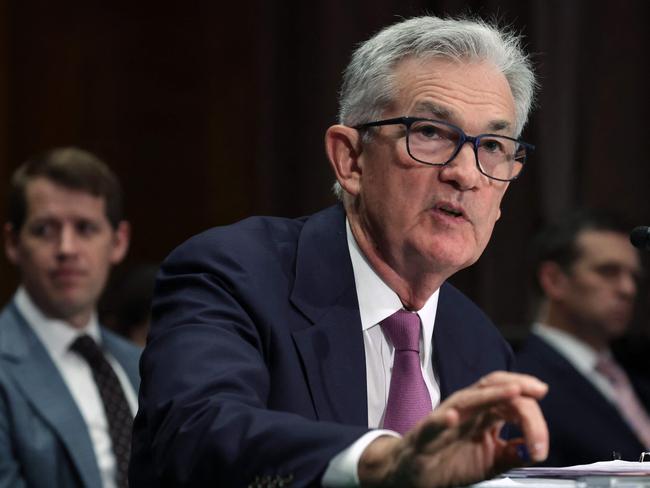
The US is further advanced in the inflationary fight than Australia but the latest labour statistics show that the necessary unemployment that interest rates use to curb inflation is not happening in the US.
And, as I warned readers earlier this week, in Australia the cost of doing business continues to escalate and large enterprises are passing on those costs.
Our cost rises have been boosted by a totally botched renewable energy program that is not only boosting the cost of power and gas, but threatens shortages.
And also in Australia, the Reserve Bank faces a potential disaster because Australians elected a government that, with the states, not only botched energy policy but dedicated itself to boosting inflation via pressing for wage rises while introducing industrial relations legislation that slashes productivity.
It’s a deadly cocktail for those who are already under mortgage stress.
In the US a year ago the market was confident that American interest rates would fall in 2023-24 and the US 10-year bond rate was around 3 per cent – having been even lower in previous months.
Now an even greater warning of what is ahead comes, with the spectacular rise in the US two-year bond rate, where the yield hit 5.12 per cent after the US labour figures – the highest since June 2007.
Central bankers in the US, UK, Europe and of course, our Reserve Bank Governor Philip Lowe, are discovering that higher interest rates are not working in the way they have performed in past inflationary bouts.
The US is further advanced in the inflationary fight than Australia but the latest labour statistics show that the necessary unemployment which interest rates use to curb inflation is not happening in the US.
And, as I warned readers earlier this week, in Australia the cost of doing business continues to escalate and large enterprises are passing on those costs.
Our cost rises have been boosted by a totally botched renewable energy program that is not only boosting the cost of power and gas, but threatens shortages.
And also in Australia, the Reserve Bank faces a potential disaster because Australians elected a government that with the states not only botched energy policy but dedicated itself to boosting inflation via pressing for wage rises while introducing industrial relations legislation that slashes productivity.
It’s a deadly cocktail for those who are already under mortgage stress.
In the US a year ago the market was confident that American interest rates would fall in 2023-24 and the US 10-year-bond rate was around 3 per cent – having been even lower in previous months.
Now an even greater warning of what is ahead comes with the spectacular rise in the US two year bonds rate where the yield hit 5.12 per cent after the US labour figures – the highest since June 2007.

When yields rise the value of bonds slumps, so there are further rounds of big bond losses in the US. Part of the problem in the US is that, like Australia, there is a shortage of skills and labour and that shortage has permeated the US wage system, making it extremely difficult for interest rates to work as was planned.
Central banks can boost the impact of interest rate rises by withdrawing money from the community. The US Federal Reserve is undertaking such a process but so far it has not hit the labour market.
The market expects further US interest rate rises.
Australia, therefore, faces a grim situation because any US rate rises add to the consequences of Canberra’s actions and the continued huge spending by the states, particularly Victoria.
The credit rating agencies should have substantially reduced their ratings of delinquent Australian states, forcing them to stop their unrestrained spending, which offsets the impact of higher interest rates.
That may be ahead.
Australia has a unique situation because even without the looming US interest rate rises we were looking at further increases in interest rates, although we thought we were near the end.
If the US Federal Reserve does what the market expects and substantially increases rates to give the US economy a greater kick, then we will have no choice but to follow.
If we don’t our dollar will be trashed and, as a country dependent on imports, inflation will rise further, creating a vicious circle.
Sharemarkets around the world, including Australia, have performed remarkably well because companies are learning how to live with inflation and many have been able to pass on costs.
The victims are the smaller enterprises.
In addition, Australia is unique in that our banks went on a lending spree in the Covid-19 years and now almost 30 per cent of all mortgages are under looming stress.
If interest rates have to rise further then that percentage will increase sharply.
To compound that with lower productivity and a disruptive voice referendum is almost beyond belief.
I have been warning about these dangers for some time but, like the markets, I was hopeful the situation might get under control. It remained fearful of the repercussions of the botched renewables program and the push to lower productivity.
It’s possible a reconstituted Reserve Bank may need to increase its inflationary target to around 4 per cent but that will mean higher rates for a longer period.
What’s required is governments to understand the damage they are causing, but there is no chance of that getting through.
Yesterday I set out some strategies for people under mortgage stress. They are now even more important.








Central bankers in the US, Britain, Europe and of course, our own Reserve Bank governor Philip Lowe, are discovering that higher interest rates are not working in the way they have in past bouts of inflation.